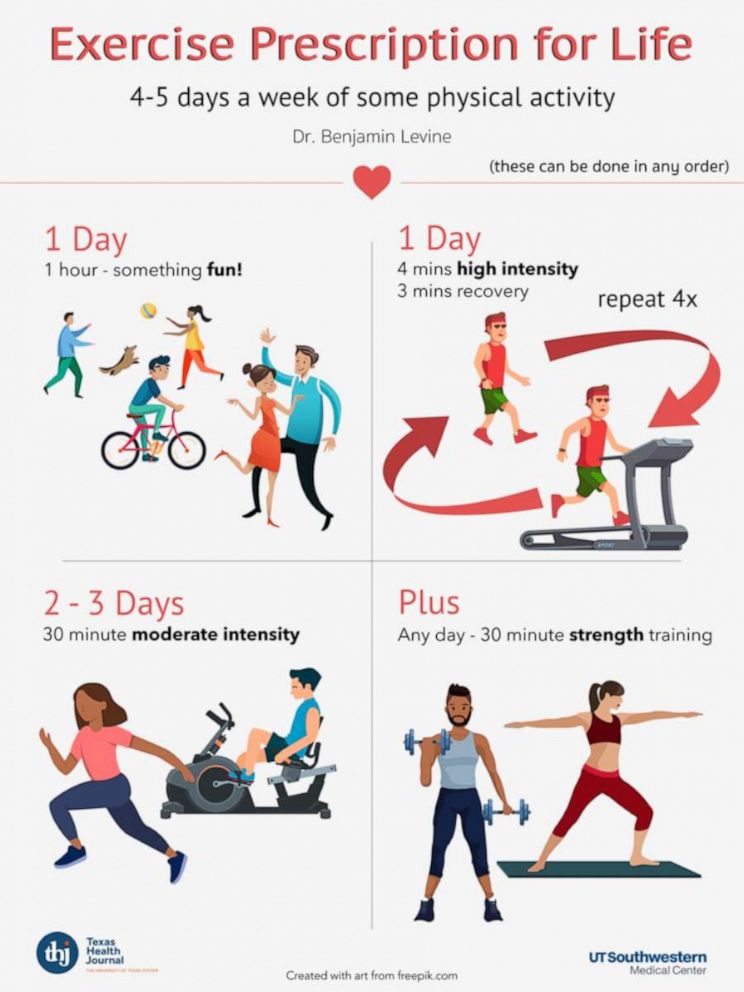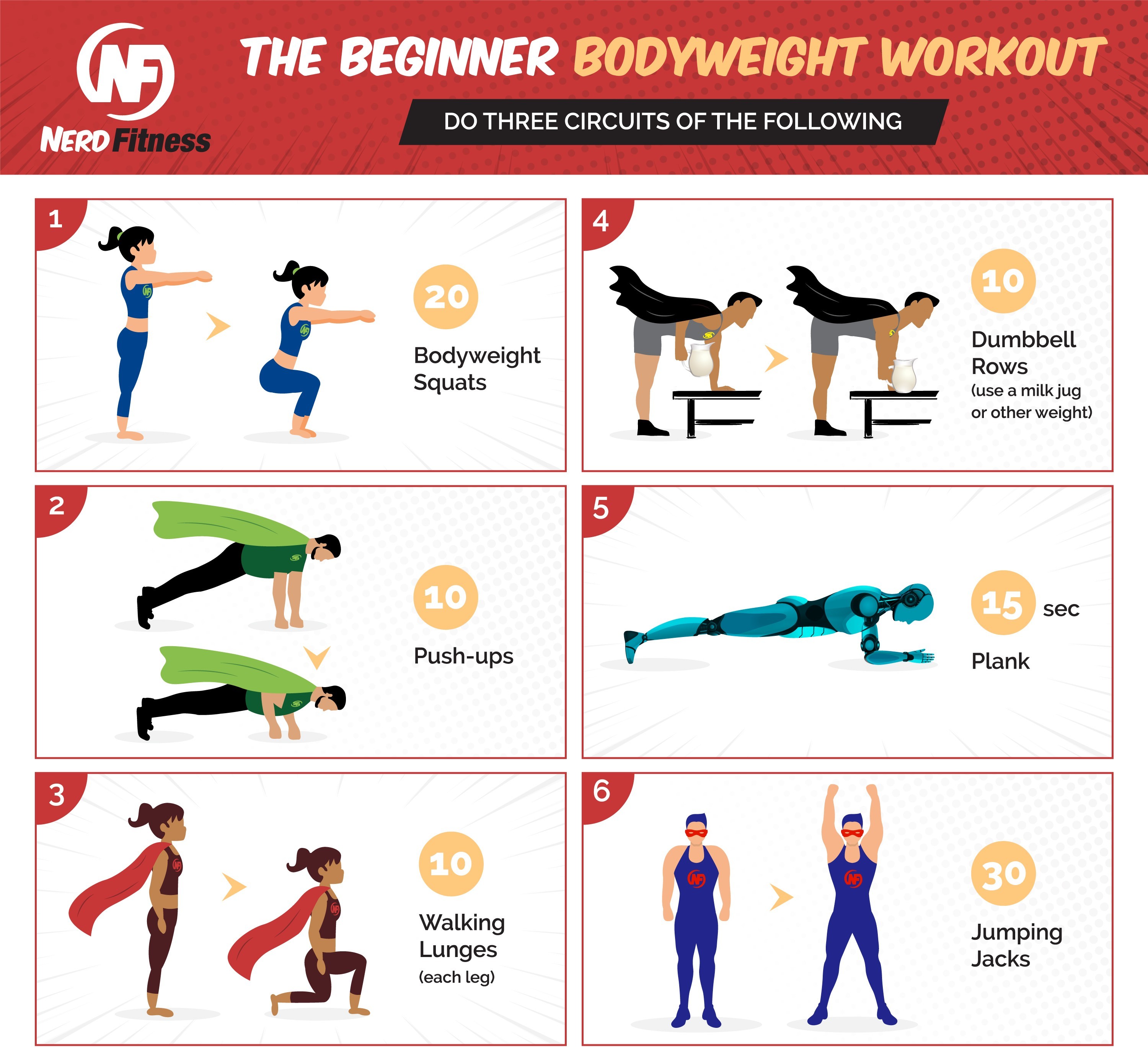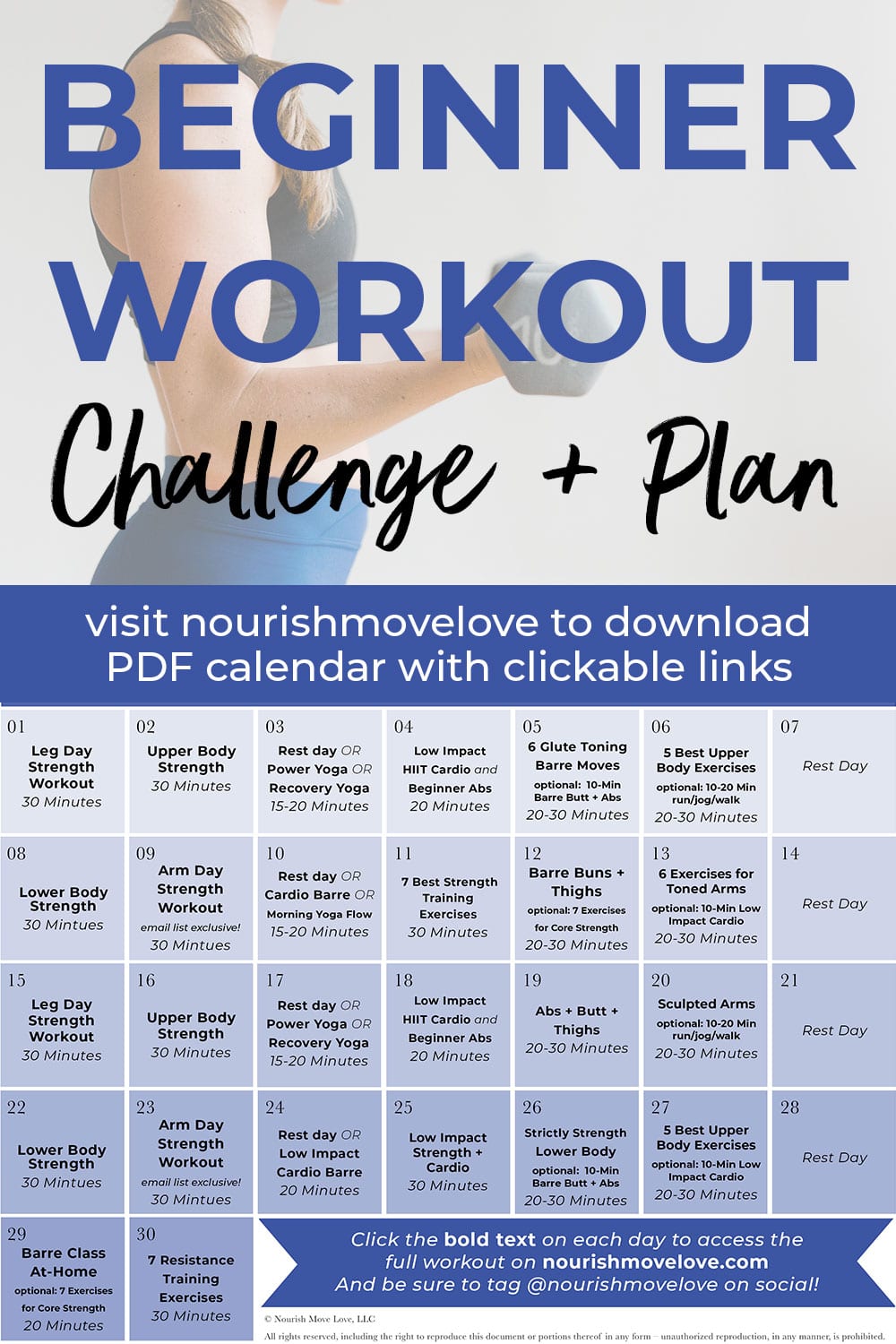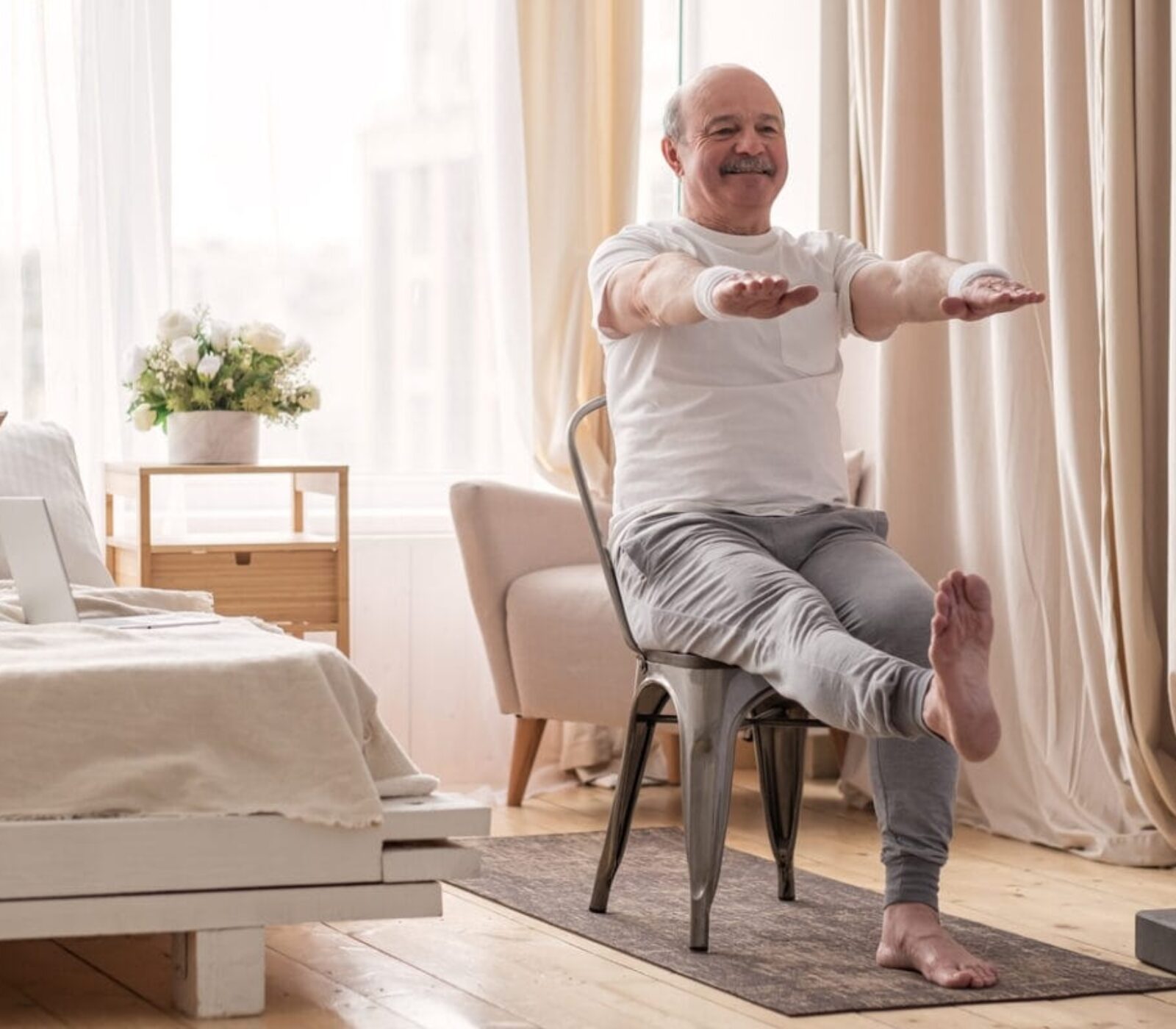“The Ultimate Guide to Building Healthy Exercise Routines for Life
Artikel Terkait The Ultimate Guide to Building Healthy Exercise Routines for Life
- Groundbreaking AI-Enabled Devices for Real-Time Glucose Tracking
- The Revolutionary Impact of AI on Cardiovascular Health Devices
- [AI in Healthcare] How AI-Powered Devices Enhance the Patient Journey
- Future of Medical Diagnostics: AI-Powered Imaging for Enhanced Accuracy and Efficiency
- Unveiling the Precision Revolution: How AI Empowers Medical Devices in Healthcare
Pengantar
Dengan senang hati kami akan menjelajahi topik menarik yang terkait dengan The Ultimate Guide to Building Healthy Exercise Routines for Life. Mari kita merajut informasi yang menarik dan memberikan pandangan baru kepada pembaca.
Table of Content
Video tentang The Ultimate Guide to Building Healthy Exercise Routines for Life
The Ultimate Guide to Building Healthy Exercise Routines for Life

In today’s fast-paced world, prioritizing our health often takes a backseat. However, integrating regular exercise into our lives is not just a trend; it’s a cornerstone of well-being. A well-structured exercise routine can improve your physical health, boost your mental clarity, and enhance your overall quality of life.
This comprehensive guide will walk you through the process of building healthy exercise routines that are sustainable, enjoyable, and tailored to your individual needs and goals.
Why Exercise Matters: The Profound Benefits
Before diving into the specifics of building a routine, it’s crucial to understand why exercise is so vital. The benefits extend far beyond just weight management.
-
Physical Health:
- Cardiovascular Health: Exercise strengthens your heart, improves circulation, lowers blood pressure, and reduces the risk of heart disease, stroke, and other cardiovascular ailments.
- Weight Management: Exercise helps you burn calories, build muscle mass, and maintain a healthy weight. It also regulates metabolism and improves body composition.
- Bone Density: Weight-bearing exercises like walking, running, and strength training can increase bone density, reducing the risk of osteoporosis and fractures.
- Muscle Strength and Endurance: Exercise builds muscle strength, power, and endurance, making everyday tasks easier and improving athletic performance.
- Improved Sleep: Regular physical activity can improve sleep quality, helping you fall asleep faster, sleep more deeply, and wake up feeling refreshed.
- Reduced Risk of Chronic Diseases: Exercise can lower the risk of type 2 diabetes, certain cancers (colon, breast, endometrial), and other chronic conditions.


-
Mental and Emotional Well-being:
- Mood Enhancement: Exercise releases endorphins, which have mood-boosting effects. It can help alleviate symptoms of depression, anxiety, and stress.
- Cognitive Function: Exercise improves blood flow to the brain, enhancing cognitive function, memory, and concentration. It can also protect against age-related cognitive decline.
- Stress Reduction: Physical activity helps you cope with stress by reducing levels of stress hormones like cortisol.
- Increased Self-Esteem: Achieving fitness goals and seeing physical improvements can boost your self-esteem and confidence.
- Social Connection: Participating in group exercise classes or sports can provide opportunities for social interaction and connection.

Building Your Personalized Exercise Routine: A Step-by-Step Approach
Creating a successful exercise routine requires careful planning and consideration. Here’s a step-by-step approach to guide you:
-
Define Your Goals:
- What do you want to achieve with exercise? Do you want to lose weight, build muscle, improve your cardiovascular health, reduce stress, or simply feel better?
- Be specific and realistic. Instead of saying "I want to lose weight," set a goal like "I want to lose 1-2 pounds per week."
- Write down your goals and keep them visible to stay motivated.
-
Assess Your Current Fitness Level:
- Before starting any new exercise program, it’s essential to assess your current fitness level. This will help you determine a safe and effective starting point.
- Consider the following:
- Cardiovascular Fitness: How easily can you walk, jog, or climb stairs without getting winded?
- Strength: How much weight can you lift? How many push-ups or sit-ups can you do?
- Flexibility: How easily can you touch your toes or reach behind your back?
- Body Composition: What is your body fat percentage? What is your muscle mass?
- You can consult a healthcare professional or certified fitness trainer for a comprehensive fitness assessment.
-
Choose Activities You Enjoy:
- The key to sticking with an exercise routine is to choose activities you genuinely enjoy. If you dread your workouts, you’re less likely to stay consistent.
- Experiment with different types of exercise to find what you like. Consider the following options:
- Cardiovascular Exercise: Walking, running, cycling, swimming, dancing, hiking, elliptical training, rowing.
- Strength Training: Weightlifting, bodyweight exercises (push-ups, squats, lunges), resistance bands, Pilates.
- Flexibility and Mobility: Stretching, yoga, Tai Chi, foam rolling.
- Mind-Body Practices: Yoga, Pilates, Tai Chi, meditation.
- Don’t be afraid to try new things. You might discover a hidden passion for a particular activity.
-
Create a Balanced Routine:
- A well-rounded exercise routine should include a combination of cardiovascular exercise, strength training, and flexibility/mobility work.
- Aim for the following:
- Cardiovascular Exercise: At least 150 minutes of moderate-intensity or 75 minutes of vigorous-intensity aerobic activity per week.
- Strength Training: Two or more days per week, working all major muscle groups (legs, back, chest, shoulders, arms, core).
- Flexibility and Mobility: Daily stretching or mobility exercises to improve range of motion and prevent injuries.
- Here’s a sample weekly routine:
- Monday: Strength Training (Full Body)
- Tuesday: Cardio (30-45 minutes of brisk walking or cycling)
- Wednesday: Rest or Active Recovery (light stretching or yoga)
- Thursday: Strength Training (Full Body)
- Friday: Cardio (30-45 minutes of swimming or dancing)
- Saturday: Outdoor Activity (hiking, biking, or sports)
- Sunday: Rest or Active Recovery
-
Start Slowly and Gradually Increase Intensity:
- If you’re new to exercise, start slowly and gradually increase the intensity and duration of your workouts over time.
- Begin with shorter workouts and lower weights, and gradually increase the time and resistance as you get stronger.
- This will help you avoid injuries and burnout.
-
Warm Up and Cool Down:
- Always warm up before each workout to prepare your muscles for exercise. A warm-up should include light cardio and dynamic stretching.
- Cool down after each workout to gradually bring your heart rate back to normal and prevent muscle soreness. A cool-down should include static stretching.
-
Listen to Your Body:
- Pay attention to your body and don’t push yourself too hard, especially when you’re first starting out.
- Rest when you need to, and don’t hesitate to take a day off if you’re feeling sore or fatigued.
- If you experience any pain or discomfort during exercise, stop immediately and consult a healthcare professional.
-
Stay Consistent:
- Consistency is key to achieving your fitness goals. Try to exercise regularly, even if it’s just for a short period of time.
- Schedule your workouts into your calendar and treat them like important appointments.
- Find an exercise buddy to help you stay motivated and accountable.
-
Stay Hydrated and Nourished:
- Drink plenty of water before, during, and after exercise to stay hydrated.
- Eat a balanced diet that includes plenty of fruits, vegetables, whole grains, and lean protein.
- Fuel your body with nutritious foods to support your workouts and recovery.
-
Track Your Progress and Adjust as Needed:
- Keep track of your workouts, including the type of exercise, duration, intensity, and weight lifted.
- Monitor your progress towards your goals and adjust your routine as needed.
- If you’re not seeing results, you may need to increase the intensity or duration of your workouts, or change your diet.
Tips for Staying Motivated
- Set Realistic Goals: Don’t try to do too much too soon. Set small, achievable goals that you can build upon over time.
- Find an Exercise Buddy: Exercising with a friend can make workouts more enjoyable and help you stay accountable.
- Join a Group Fitness Class: Group classes can provide motivation, support, and a sense of community.
- Reward Yourself: Celebrate your achievements with non-food rewards, such as a new workout outfit, a massage, or a weekend getaway.
- Make it Fun: Choose activities you enjoy and find ways to make your workouts more engaging. Listen to music, watch TV, or exercise outdoors.
- Be Patient: It takes time to see results from exercise. Don’t get discouraged if you don’t see changes overnight. Just keep showing up and putting in the effort.
Common Mistakes to Avoid
- Overtraining: Pushing yourself too hard can lead to injuries, burnout, and decreased performance.
- Ignoring Pain: Don’t ignore pain or discomfort during exercise. Stop immediately and consult a healthcare professional.
- Not Warming Up or Cooling Down: Warming up and cooling down are essential for preventing injuries and promoting recovery.
- Poor Form: Using poor form can increase your risk of injury. Focus on proper technique and consider working with a certified trainer.
- Not Varying Your Routine: Doing the same workouts over and over again can lead to boredom and plateaus. Vary your routine to keep things interesting and challenge your body in new ways.
Conclusion
Building healthy exercise routines is a journey, not a destination. It requires commitment, patience, and a willingness to adapt and adjust along the way. By following the steps outlined in this guide, you can create a personalized exercise routine that is sustainable, enjoyable, and effective for achieving your fitness goals. Remember to listen to your body, stay consistent, and make exercise a lifelong habit for a healthier, happier you.
I hope this article is helpful! Let me know if you’d like any adjustments or further refinement.

Penutup
Dengan demikian, kami berharap artikel ini telah memberikan wawasan yang berharga tentang The Ultimate Guide to Building Healthy Exercise Routines for Life. Kami mengucapkan terima kasih atas waktu yang Anda luangkan untuk membaca artikel ini. Sampai jumpa di artikel kami selanjutnya!
